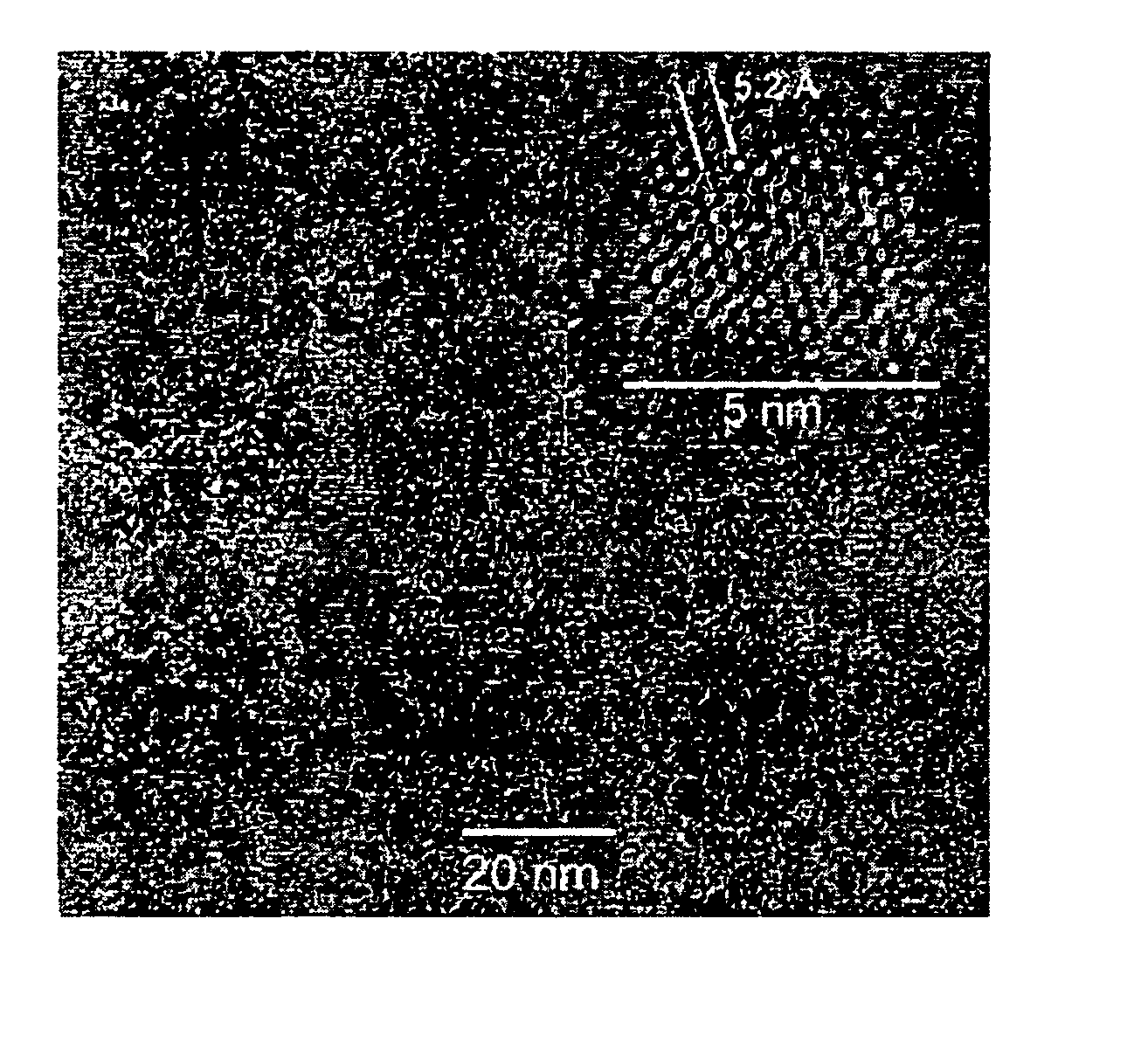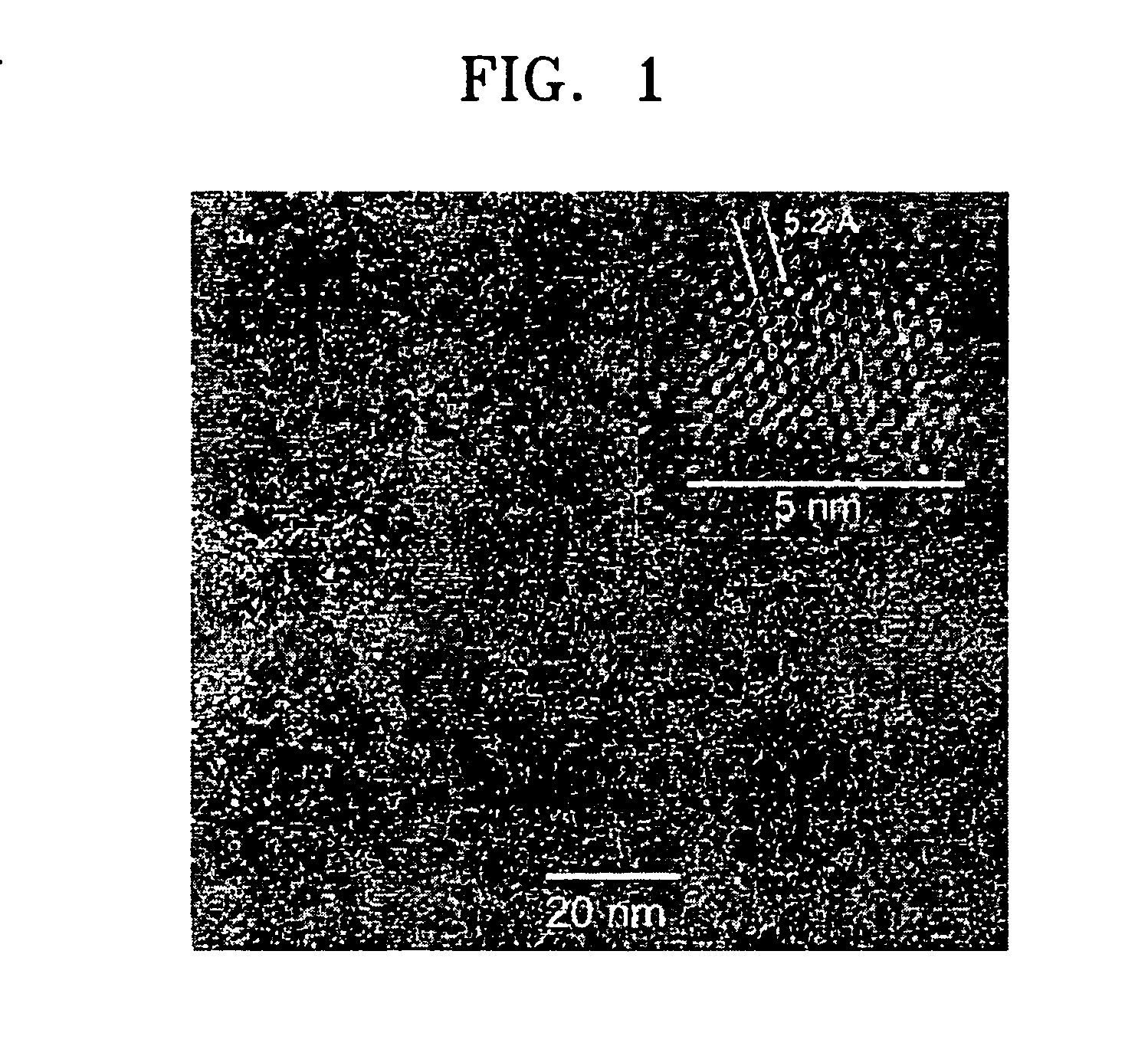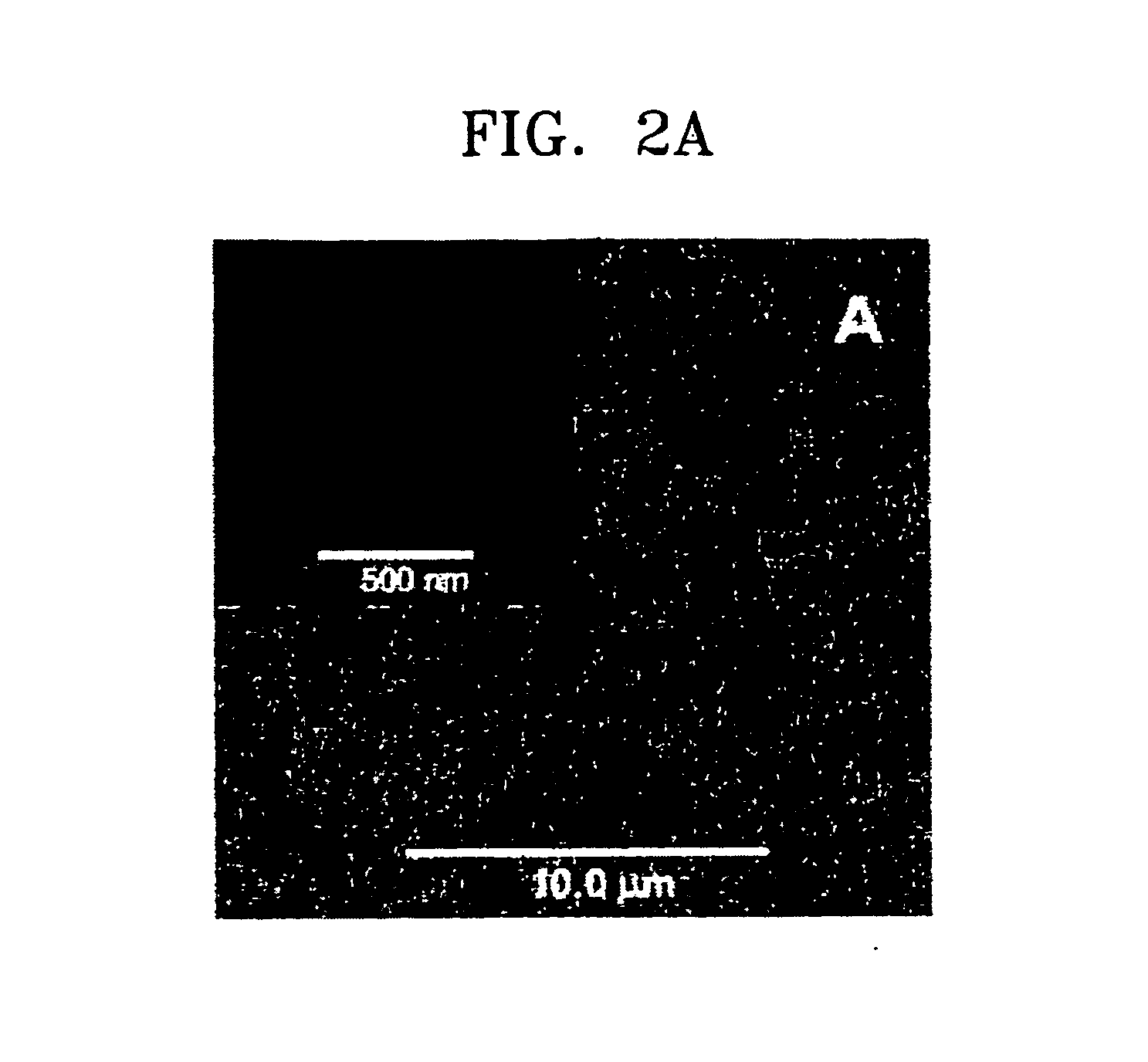Method for Forming Zno Nano-Array and Zno Nanowall for Uv Laser On Silicon Substrate
a technology of uv laser and nano-array, which is applied in the direction of semiconductor lasers, crystal growth processes, polycrystalline material growth, etc., can solve the problems of high vacuum condition, inability to form a large-area zno nano-array, and inability to form large-area zno nano-array arrays. , to achieve the effect of excellent laser characteristics and superior laser characteristics
- Summary
- Abstract
- Description
- Claims
- Application Information
AI Technical Summary
Benefits of technology
Problems solved by technology
Method used
Image
Examples
example 1
[0041] ZnO nanoparticles were synthesized by (1) synthesizing precursors from Zn acetate and ethanol (99.5%) followed by (2) hydrolysis with LiOH. In more detail, a solution of 0.01 M Zn acetate in 100 ml ethanol was placed in a 250 ml Erlenmeyer flask equipped with a reflux condenser. The reaction solution was refluxed and distilled at 78 to 85° C. for about 3 hours until the volume of the reaction solution reduced to 40 ml. In this step, a reaction time is very important. If the reaction time exceeds 3 hours, bulky nonuniform particles may be created, whereby the solution becomes turbid. On the other hand, if it is less than 3 hours, functions as precursors may be lowered. Final product of precursors must be clear and transparent. 40 ml of precursors solution obtained were diluted with 60 ml of 0.1 M LiOH ethanol solution. At this time, if the temperature of the reaction solution is increased, the crystal size of ZnO may increase, thereby producing a suspension. To solve this prob...
example 2
[0043] A Si-wafer to be used in the present invention was pretreated as follows. First, the Si-wafer was washed with acetone in an ultrasonic bath and then subjected to removal of organic substances using a piranha solution (a mixed solution composed of 30% H2SO4 and H2O2 in a 2:1 volume ratio) at room temperature for about 30 minutes. Amorphous SiO2 on the Si-wafer was also removed using a 20% HF solution. The Si-wafer thus obtained was temporarily free from Si oxidation due to hydrogen coated on surface oxygen.
[0044] The Si-wafer after pretreatment was dip-coated with the ZnO nanoparticles synthesized in Example 1 at a rate of 4.21 cm / min and thermally treated at about 200° C. to immobilize the ZnO nanoparticles on the Si-wafer. However, a final product is not affected even when the thermal treatment is omitted.
example 3
[0045] A nutrient solution for formation of a ZnO nanorod array was prepared by mixing a 0.1M Zn nitrate solution and a 0.1M hexamethylenetetramine (HMTA) solution in a volume ratio of 1 to 1 (pH=about 7.0). The ZnO nanoparticles-dip coated Si-wafer prepared in Example 2 was placed in a Teflon autoclave and then incubated with the nutrient solution at 95° C. for about 6 hours. However, a nanorod array can be formed even when the thermal treatment was performed for less than 1 hour. The final product was washed with deionized water (18.2 μΩ) followed by water removal at about 100° C.
[0046]FIG. 2 is Scanning Electron Microscopy (SEM) images of surface(FIG. 2A), and a cross-section(FIG. 2B), and a TEM image of cross-section (FIG. 2C) of the ZnO nanorod array formed on the Si-wafer. As shown in FIG. 2, very dense ZnO nanorods of about 100 nm in diameter and about 1.5 μm in length were perfectly oriented on the Si-wafer.
[0047]FIG. 3 is a powder X-ray diffraction pattern of the ZnO nano...
PUM
| Property | Measurement | Unit |
|---|---|---|
| temperature | aaaaa | aaaaa |
| temperature | aaaaa | aaaaa |
| length | aaaaa | aaaaa |
Abstract
Description
Claims
Application Information
 Login to View More
Login to View More - R&D
- Intellectual Property
- Life Sciences
- Materials
- Tech Scout
- Unparalleled Data Quality
- Higher Quality Content
- 60% Fewer Hallucinations
Browse by: Latest US Patents, China's latest patents, Technical Efficacy Thesaurus, Application Domain, Technology Topic, Popular Technical Reports.
© 2025 PatSnap. All rights reserved.Legal|Privacy policy|Modern Slavery Act Transparency Statement|Sitemap|About US| Contact US: help@patsnap.com



